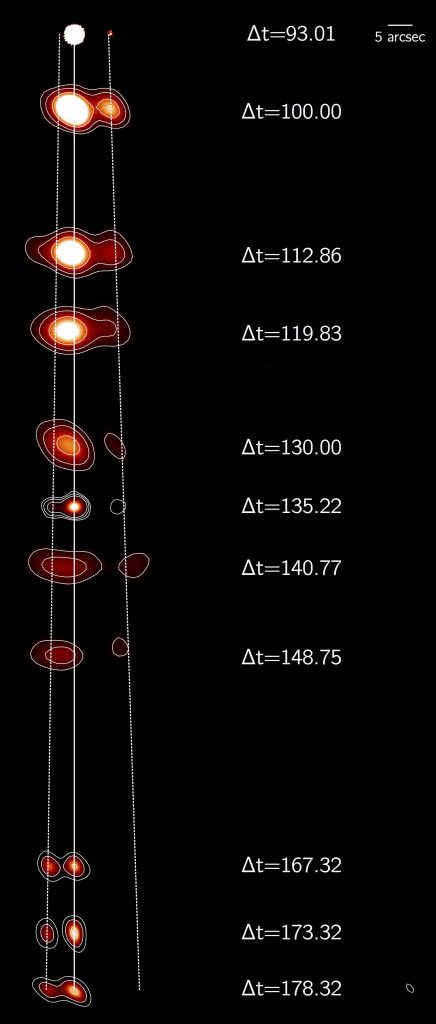
Dr. Alexandra Tetarenko
Maunakea astronomer, Dr. Alexandra Tetarenko, who works at the James Clerk Maxwell Telescope, has been collaborating with a research group led by Oxford’s Department of Physics which has observed a black hole ejecting material at close to the speed of light, out to some of the largest separations ever seen. These observations have allowed a deeper understanding into how black holes interact with their environment.
Dr. Tetarenko’s research uses a number of telescopes around the world, including the facilities here on Maunakea, to study transient astrophysical systems – objects that change brightness on short timescales. “The system we studied in this instance contains a dynamically confirmed black hole within our Galaxy and another star (not too dissimilar from our sun) orbiting one another. The black hole, due to its strong gravitational pull, syphons material from its companion star in a process known as accretion” says Dr. Tetarenko.
Lead author, Joe Bright, a PhD student at Oxford University’s Department of Physics explains: “Most importantly to this work is the fact that the material is not all lost into the black hole. Outflows are launched away from the black hole at extreme velocities – almost the speed of light – and can be observed with radio telescopes.
“Our research group, consisting of many international astronomers, led an extensive observing campaign on this particular system, known as MAXI J1820+070, after it went into a bright outburst in the summer of 2018. This in itself was remarkable as this type of transient astrophysical system mostly accretes a very small amount of material and so can’t be seen; they do however occasionally go into outburst and only then are they observable.”

A series of images of the black hole MAXI J1820+070 throughout its 2018 outburst, taken with several different radio telescopes. The solid white line marks the position of the black hole, and the dotted lines show the movement of two ejections of plasma launched during the outburst.
The observing campaign of MAXI J1820+070 used the Very Long Baseline Array (VLBA), which has an antenna located in Hawaii on the slopes of Maunakea, along with other telescopes in the UK, USA, and the newly operational MeerKAT telescope in South Africa. “With these facilities we were able to track the connection between accretion and outflows. More excitingly, we were able to observe the system launching ejections of material, and to track these ejections over a wide range of separations from the black hole” explains Dr. Tetarenko.
The group successfully continuously tracked these ejections to extreme distances from the black hole with a range of radio telescopes and the final angular separation is among the largest seen from such systems. The ejections are moving so fast that they appear to be moving faster than the speed of light – they are not, rather this is a phenomenon known as apparent superluminal motion.
Co-lead on the project, Dr. Rob Fender said “We’ve been studying these kinds of jets for over 20 years and never have we tracked them so beautifully over such a large distance. To see them so early on in the operation of a new facility like MeerKAT is fantastic, and – as is often the case – teaches us not to confidently predict what we’re going to see in the future”.
Using the series of radio observations in this study, the authors were able to better estimate how much energy is contained in these ejections using a novel method for this type of system. “Galactic black holes, such as MAXI J1820+070, are thought to be miniature versions of the supermassive black holes that are found at the centre of galaxies. The feedback from these supermassive black holes is thought to be a vital component regulating the growth of galaxies – but these systems evolve on timescales much longer than a human lifetime. Their galactic counterparts, however, evolve quickly and are therefore the perfect systems to study the feedback process and its connection to accretion” explains lead author Joe Bright.
This work is published in the journal Nature Astronomy: https://www.nature.com/articles/s41550-020-1023-5
-20200302



